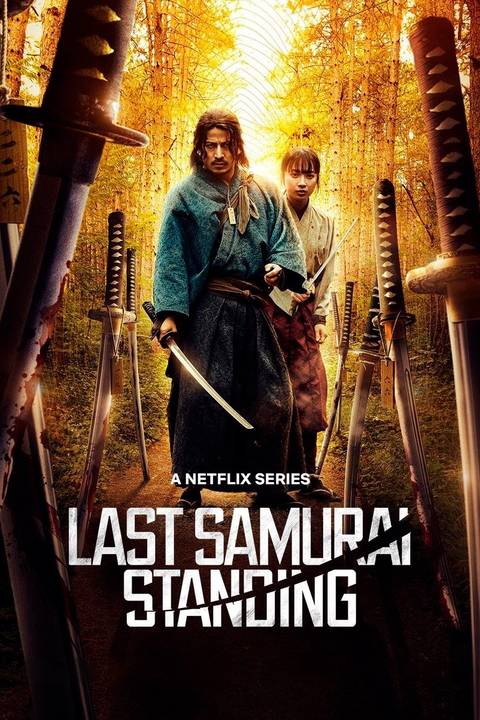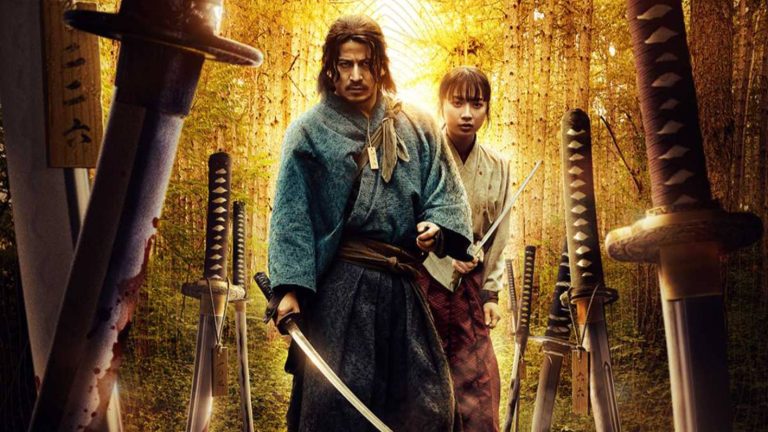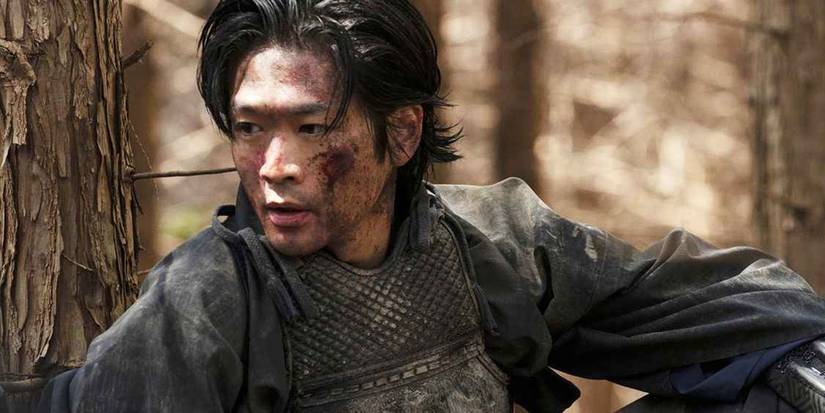Last Samurai Standing is not a complete home run, but it certainly works more often than it doesn’t. Last Samurai Standing has been dubbed a Shogun replacement, if only for its feudal Japanese setting. Quality-wise, Shogun is a superior series, but Last Samurai Standing‘s Squid Game elements make it undeniably entertaining.
To put it bluntly, Last Samurai Standing is Squid Game with katana; a group of rich elite looking to usher Japan into a new era forces 292 samurai, now dubbed obsolete shizoku, into a deadly competition. The winner gets 100,000 yen, while the organizers gain the extinction of a bygone generation of Japanese warriors and the entertainment of watching the chaos from afar.
The similarities to shows like Squid Game do not stop there, with each contestant having their own reason for competing, often linking to a lower social class. There are bets on the winners, losers, and commentary on the class divide, yet Last Samurai Standing offsets all this with visceral, engaging, expert action.
The series may compare unfavorably to other Battle Royale-like shows and movies in some ways, such as character and thematic weight, but it knows its strengths, and that makes it worth watching.
Last Samurai Standing’s Best Aspect Is Its Action Scenes
The biggest of these strengths is its action scenes. The show’s lead, Junichi Okada, also serves as its action choreographer and does an excellent job. Yes, some of the bigger scenes fall victim to “waiting” choreography, in which performers try to look busy before striking to keep characters alive.
However, this is rare and can be excused if it results in action scenes of this scale and fluidity. Every sequence involves long, sweeping camera takes with a minimal number of cuts to conceal stunt performers or poor choreography. All performers, actors or otherwise, are experts with the variety of weaponry on show, allowing each fight to feel dangerous and visceral.
Some standouts include a fight against soldiers at the end of episode 2, a one-take bar fight in episode 4, and a showdown amid fireworks in episode 6. This is without mentioning several one-on-one battles between the various contestants of the tournament, dubbed “Koduko” by the organizers. Everything is in-camera, too, with very minimal, unnoticed CGI enhancement.
Last Samurai Standing knows exactly what can set it apart from other battle royale shows, and doesn’t waste a moment to showcase these elements. As someone who has always valued great choreography, or respects attempts to create fluid action even if it doesn’t always work, I loved this aspect of Last Samurai Standing.
Last Samurai Standing Has Simple But Mostly Effective Characters
Most other aspects are serviceable, if not excellent. The characters embody this, with most working as effective protagonists or antagonists, without being overly complex or entirely sympathetic. The comparisons to Squid Game may become tedious, but the claustrophobic nature of that show and its more in-depth writing allowed it to have truly great TV characters.
Last Samurai Standing does not replicate this, but enough is given to each character to make the show interesting beyond its action. The main character, Shujiro, is a former samurai who enrolls in the competition to save his family and village from a bout of cholera.
This is a noble, honorable motivation that makes Shujiro easy to root for, even if his past as a warrior and family life are only shown via the same, eventually repetitive flashbacks. I would have liked more with Shujiro’s family to make the weight of the show land better, but the motivations as they are shown are effective enough.
The same goes for young Futaba, who also wishes to stop a cholera outbreak, leading Shujiro to protect her. This adds a wholesome dynamic, even if Futaba’s helpness verges into somewhat regressive territory. One argument in episode 5 surrounds letting a young boy in the contest die, as he cannot fend for himself. Futaba is similarly helpless, but no one raises this, as she is a young girl.
I would have liked Futaba to grow more as the show went on, perhaps by training with the other warriors, but she doesn’t. Still, her motivations work, and she adds heart to the show, despite her writing being regressive.
Of the other supporting cast members, Kyojin is the most compelling. Little is revealed about his time before the contest, and he seems to know a lot about the other competitors. With a swagger and charm missing from his mostly serious peers and mysteries raised going into further seasons, Kyojin is a standout character.
Otherwise, the rest of Last Samurai Standing‘s ensemble is fine. Whether it’s Shujiro’s “siblings” who also enter the competition, the main villain “Organizer” group, or a samurai rival named Bukotsu, each of the characters is given believable motivations. These motivations and histories are never fleshed out enough to be genuinely compelling, but they work well enough for the show.
Last Samurai Standing Includes Some Decent, Albeit Sometimes Outdated, Themes
From a thematic standpoint, Last Samurai Standing‘s messaging is sometimes strong and at other times outdated. Effective, modern battle royales like Squid Game, The Hunger Games, or Alice in Borderlands focus on modern issues like capitalism, poverty, class divide, and revolting against oppression. Last Samurai Standing has some of this, but other themes don’t hit as hard.
For instance, the main villains do include some commentary on class divide, but considering their main goal is the extinction of samurai from a real period in history, that kind of discrimination is not as prevalent today, making it less effective.
However, the commentary on poorer people not getting access to medical care or protection is still effective. If the characters had been given more depth, maybe these themes would land harder. As they are, though, Last Samurai Standing‘s messages work to an extent, but it’s clear the show emphasized the strong samurai action over more complex messaging.
Last Samurai Standing Sets Up A Strong Season 2
That said, there is potential for Last Samurai Standing to deepen its characters and thematic resonance going forward. I was unaware of the manga on which the show is based, meaning I expected it to wrap up in the six episodes released on Netflix. However, it left me waiting and intrigued by what season 2 could bring.
The hints about Kyojin’s role in everything remain compelling going forward, as do how the game at the show’s center will develop. Learning more about each character and seeing them develop in season 2 would fix some of the depth issues in season 1. Future installments should match the high bar set for the action, and while the character, narrative, and depth can be more complex, Last Samurai Standing season 1 knew what worked, and season 2 will likely be no different.

- Release Date
-
November 13, 2025
- Network
-
Netflix
- Directors
-
Michihito Fujii
- Writers
-
Shogo Imamura
-

Junichi Okada
Shujiro Saga
-

Yumia Fujisaki
Futaba Katsuki
- Last Samurai Standing has some of the best action I’ve seen in a long time
- All performances, in choreography or actin, work in Last Samurai Standing
- Last Samurai Standing’s characters have believable, if simple, motivations
- Some of the themes in Last Samurai Standing are prevalent and well-explored
- The teases for Last Samurai Standing season 2 are compelling
- Last Samurai Standing’s character work is sometimes surface level or regressive
- Some of Last Samurai Standing’s other messages are outdated
- Last Samurai Standing is not as emotionally resonant as some other battle royal stories



